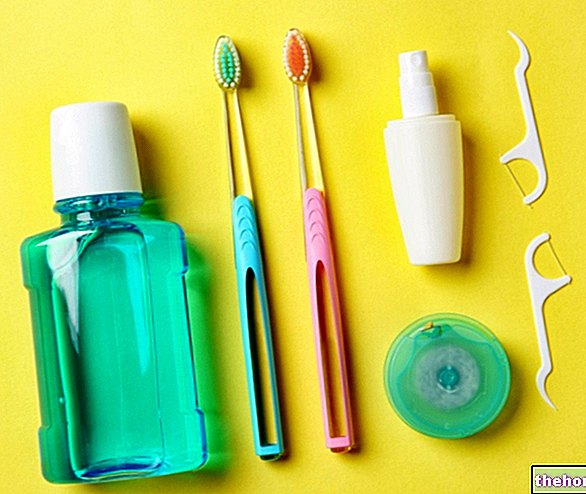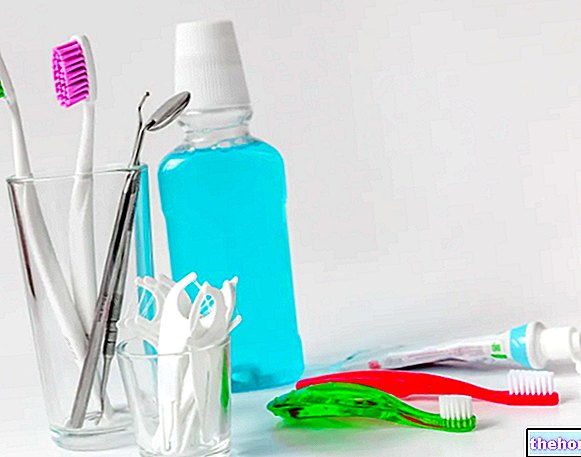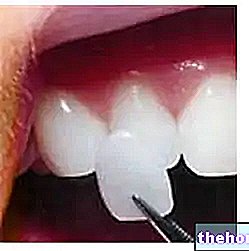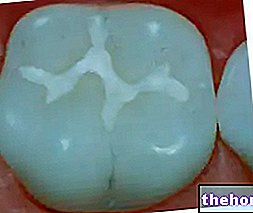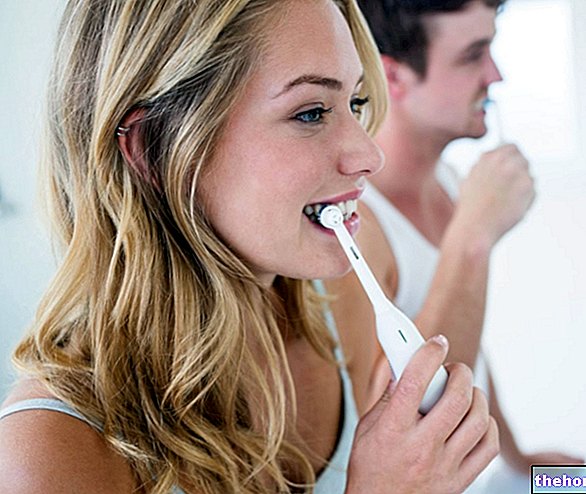
Dental floss must always be used in combination with toothbrush, toothpaste and mouthwash, other very important (and irreplaceable) tools of home dental hygiene.
before brushing with toothbrush and toothpaste: the floss, by removing plaque and food residues nestled between the teeth, allows the active ingredients of the toothpaste (eg fluoride or whitening agents) to reach even the interdental fissures.In any case, what really matters is not so much the use of dental floss before or after cleaning with the toothbrush, but rather an "adequate method of use" and constant use of the same. Let's see, therefore, how to use it correctly floss.
. If the toothbrush should be used at least three times a day and immediately after meals, the dental floss can be passed between the teeth even only once or twice during the day.
It is good to reiterate this once again: what is important is to use the thread regularly in an appropriate way.
Below are the main rules for a flawless use of dental floss:
- Cut a segment of dental floss (with the help of the special file inserted in the container of the spool) with a length of 30-40 cm.
- Wrap both ends of the floss around your middle finger (two turns are recommended), grasping the taut floss with your thumbs and index fingers.
- Gently press the floss onto the thin interdental gap, taking care to keep it taut and firm.
- Subsequently, embrace the tooth with the floss forming a sort of C. Slide the floss down (towards the end of the crown of the tooth), always impressing a certain friction until the tooth is also cleaned below the gumline. In doing so, the floss acts like a blade, "cutting" and removing plaque.
The movement must be decisive but at the same time delicate to avoid injuring or irritating the gum. We also remember that every time the floss is inserted in an interdental space, there are two surfaces to clean; therefore, it is necessary to pass the thread in both parts.
- Whenever the floss is removed to clean the next tooth, it is imperative to use a clean portion of the tape.
- Repeat the procedure in all teeth. It is suggested to start flossing starting from the back teeth, ending with the molars on the opposite side.
- The posterior teeth (first and second molars and, if present, wisdom teeth) can cause some difficulties during the hygiene with dental floss. In case the cleaning is particularly complicated due, for example, to dental crowding or crooked teeth, it is possible to use different tools - such as wire tension forks or vibrating dental floss - which make the maneuver easier.
After cleaning all the teeth with dental floss, it is suggested to rinse the mouth thoroughly with the mouthwash, preferably enriched with fluoride. The mouthwash, in addition to refreshing the mouth, improving the breath and strengthening the dental enamel, favors the elimination of plaque or food fragments removed with the thread.
. What has been said still seems to be underestimated: the use of this very important tool for dental hygiene does not seem to be part of the habits of Italians. We therefore try to promote the use of dental floss, putting on paper the risks and complications that could be encountered by not using this effective dental device.
First of all, a lack of use of dental floss encourages the stagnation of plaque in the spaces inaccessible to the manual toothbrush; with the passage of time, the plaque deposits undergo an "evolution, transforming into real scales of tartar that can only be removed by professional dental cleaning. We briefly remember that plaque and tartar, by retaining numerous germs of the oral bacterial flora, greatly predispose to risk d "dental infections, first of all caries. It should not be forgotten, however, that plaque not removed with a brush and dental floss is also responsible for bad breath, gingivitis and bleeding gums.
Inadequate cleaning of the oral cavity → plaque deposition → formation of tartar → dental infections: caries, pulpits, abscess, cysts, granuloma, etc.
An inadequate use of dental floss, especially if hasty, is equally imprudent not only because the dirt trapped between the teeth is not effectively removed, but also because there is the risk of inflaming or traumatizing the gums.
Dental floss that breaks repeatedly at a certain point is an alarm bell, a probable sign of tooth decay, accumulation of tartar or an overflowing filling.
they fell out and replaced with permanent ones.The regular use of dental floss is a recommended dental aid for practically everyone, except for those patients who have particular dental anatomical impediments. For example, the use of traditional floss is not indicated in the presence of particularly narrow interdental spaces: in similar In situations, the excessive pressure exerted on the wire could traumatize the gums, causing lesions or small wounds. In this case, the use of a particularly delicate dental floss (eg gingival massagers) is recommended.
Furthermore, the use of dental floss is not recommended in the period immediately following the extraction of a tooth: in the first 5-7 days following the intervention, in fact, the area where the tooth was removed is particularly sensitive, swollen and painful. ; therefore, it is not recommended to use dental floss to remove dirt in teeth near the extraction point.
For further information: Dental floss For further information: Types of dental floss - Alternatives to traditional floss
